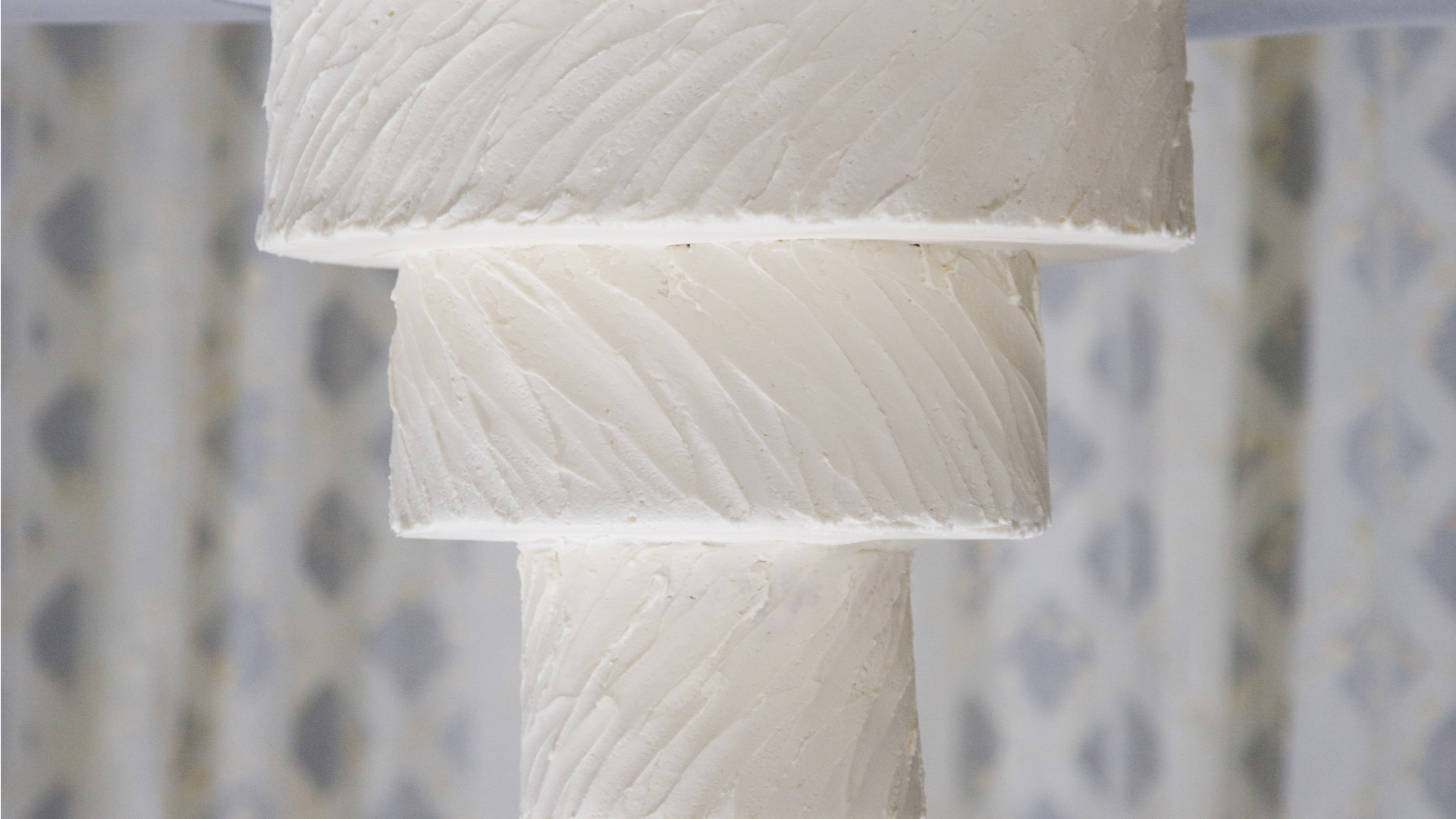Layering Value—A Different Way of Dividing Founder Equity

Most founders divide founder equity equally. But studies reveal that unhappiness with equity allocation is a leading source of founder conflict. Often, dissatisfaction escalates over time as the value that a co-founder contributes may fluctuate. Shikhar Ghosh serial entrepreneur, investor, and Professor of Management Practice at HBS, has witnessed common mistakes many co-founders make when divided equity, including overvaluing early contributions. He sat down with serial entrepreneur Lara O’Connor Hodgson, co-founder and CEO of NOW Corporation, to learn how her founding team avoided this common mistake. Hodgson shares how she and her partners developed an iterative approach to valuing founder equity.
Key Takeaways on Valuing Equity Iteratively
- As your company evolves, make time to identify new areas of value. Treat each as a layer you can carve differently.
- Following an iterative approach to valuing equity only works if all stakeholders—co-founders, investors, and partners—agree.
Could Hodgson’s approach of valuing equity iteratively work for your startup? Learn the pros cons below. Want to learn other approaches to allocating co-founder equity? Interested in tips on structuring equity splits to mitigate co-founder conflict? If a perfect model for dividing equity existed, Hodgson smiles, everyone would learn it. Perhaps the lack of a one-size-fits-all method is good. Any approach, she stresses that any approach has to fit your organization and the personalities of the co-founders.
 Make Time to Identify New Areas of Value as Your Company Evolves
Make Time to Identify New Areas of Value as Your Company Evolves
Typically, founders discuss equity as “some form of pie—whether that’s a pizza or a cake or a pie—you’re constantly thinking about how to carve it.” But, unlike a tangible pie, equity is “not just a fixed circle that you’re carving up into potentially infinitely tiny pieces,” Hodgson observes. With equity, “you’re trying to cut something up but grow it at the same time.” She and her partners “allocate value at each point that we see the potential for it.”
Creating New Value Adds Another Layer of Equity
“You start with a base,” she elucidates, that you divided in one way, among those people who started the company. “Then, a new group of people came in” who built something bigger on top of the base. “You’re not going to go re-carve the whole base.”
Layering Value
Picture circular layers that build on each other, like an inverted tiered cake. It starts with a base layer that gets divided among the co-founders. As your company grows, you created another layer of value. She explains,
Each layer is bigger than the next, and they all sort of sit atop each other. But each one is carved up differently. Layer one might be cut into three pieces. While layer two might be cut into ten pieces. It doesn’t change the three pieces that were already there.
Lara O’Connor Hodgson
For instance, in an initial division of equity, two partners may split equity 50/50. The following year, perhaps the technical co-founder created an invaluable patent. For that layer of value, new shares are issued, commensurate with the value added at that stage compared to the previous, and the equity split for this layer might be 80/20.
Hodgson shares how this has worked at NOW Corp. One of her partners identified a program that had a profound impact on the company’s growth. This person didn’t spend as much time on the company as the co-founders did each day. But the program promised to have a huge impact on the valuation of the company. Because the partners shared an iterative mindset on value and equity, the partners met and discussed, “how do we think about that now? How do we attribute some value to that? Do we give them additional shares for that?”
Trying to re-carve something up is messy. If you took a cake or a pie and you cut it into parts, and then you try to cut it again, it all falls apart. All the pieces crumble. That’s the mess that nobody wants to deal with.
Lara O’Connor Hodgson
At NOW Corp, the partners agreed to recognize that partner’s contribution and divided that layer of value in a different way. Hodgson elucidates, adding a new layer of value to divide should not detract from anyone’s share of the first layer of equity. “Nobody’s taking something away.” Instead, “We’re adding a different slice, and the whole pie has gotten bigger.”
Carving New Layers of Equity Differently
“When you then look at someone’s aggregate ownership share,” Hodgson continues, it’s composed of part of the base, a different part of the second layer, and I had a different part of the third layer.” The fact that you held a different role in layer three doesn’t affect layer one. “It’s adding a different slice, and the whole pie has gotten bigger.”
People tend to make a mess when they view equity something that can’t be fixed and growing at the same time. If you’re constantly trying to re-carve, human nature is to grab what you have—”don’t take my piece.”
Lara Hodgson
 All Stakeholders Must Agree and Feel Comfortable Regularly Adapting
All Stakeholders Must Agree and Feel Comfortable Regularly Adapting
The iterative model that she and her co-founders developed and practice at NOW Corporation may not work for everyone. It requires open lines of communication and willingness to re-evaluate regularly. If all co-founders don’t feel comfortable with those elements, “you should not do it,” she cautions. “It can go horribly wrong. Picture stacking a bunch of concentric circles that are all cut differently. The tower can tumble.”
Regardless of how you decide to structure your equity split among partners, Hodgson advises, be prepared to justify your allocation of founder equity to your investors. All stakeholders, including your investors, need to understand your rationale. If you’re adopting an iterative approach, it’s imperative that your investors feel comfortable with the choice. She also points out, many company cultures may not be compatible with an iterative evolution. “Some companies are much more structured and if you try to constantly iterate, you break” the system.
You have to constantly revisit, “does that structure work?” And the answer might change over time.
Lara Hodgson
Valuing Founder Equity Iteratively May Not Always Work
As your company starts, most founders have “a checklist of value creation,” she observes. “Each time you prove something in the model, you check it off.” For Hodgson and her co-founders, an interactive approach—valuing the contributions each founder brings and allocating equity accordingly—has worked. But she readily admits that as the business evolves and scales, a nimble iterative approach may no longer work. “You have to constantly revisit, “does that structure work?” And the answer might change over time.”
As a founder, I have to be willing to admit that the model might be wrong—for where we are—and adjust it.
Lara Hodgson
Want to learn other approaches to allocating co-founder equity? Interested in tips on structuring equity splits to mitigate co-founder conflict? If a perfect model for dividing equity existed, Hodgson smiles, everyone would learn it. Perhaps the lack of a one-size-fits-all method is good. Any approach, she stresses that any approach has to fit your organization and the personalities of the co-founders.
EXPLORE MORE
We recommend the following sources that dive deeper into common mistakes founders make when dividing equity.
- In “Founder’s Dilemmas: Equity Splits,” by Eric Ries, reviews key points from The Founder’s Dilemmas: Anticipating and Avoiding the Pitfalls That Can Sink a Startup. These include founders’ failing to understand that that the role they had during the early stages will remain the same over time. And overestimating the amount of value of early contributions and underestimating future contributions.
- “The Very First Mistake Most Startup Founders Make,” reviews results of a multi-year academic study of equity splits adopted by over 3,700 founders from over 1,300 startups in the U.S. and Canada. Authors Noam Wasserman and Thomas Hellman examine the perils of deciding to split equity too quickly and neglecting to talk about personal uncertainties and expected contributions. Additionally, it reveals that founder unhappiness with the structuring of equity splits intensifies over time and examines the pitfalls of splitting founder equity well between family members or close friends.
Tools
These assessment tools provide different formulas and ways to calculate equity splits:
- Gust, a global SaaS funding platform for early-stage startups, designed a free tool that provides founders with questions to help them determine how much value each founder will contribute. It provides a recommendation for a fair equity split based on answers.
- Co-Founder Equity Calculator is an experimental calculator that asks a series of questions to each founder than suggests an equity split.

